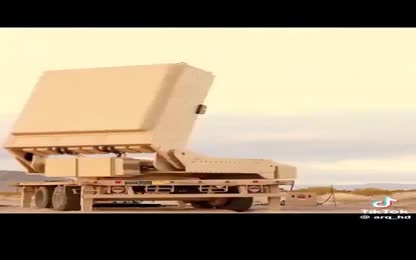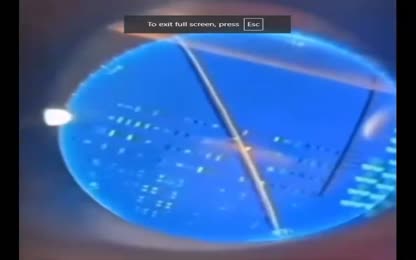Advertisement
Micro Drone Technology or Slaughter-bots?
Drones!
- Category: Uncategorized,Military/Army/Soldier/Training,Technology
- Duration: 21:38
- Date: 2019-03-22 23:58:19
- Tags: drones2
3 Comments
Video Transcript:
? Customer pilots directed almost 3,000 precision strikes last year. You're super proud of it. It allows you to separate the bad guys from the good. It's a big deal. But we have something much bigger. Your kids probably have one of these, right? Not quite. Hell of a pilot? No. That skill is all AI. It's flying itself. Its processor can react 100 times faster than a human. The stochastic motion is an anti-sniper feature. Just like any mobile device these days, it has cameras and sensors. And just like your phones and social media apps, it does facial recognition. Inside here is three grams of shaped explosive. This is how it works. Did you see that? That little bang is enough to penetrate the skull and destroy the contents. They used to say guns don't kill people. People do. Well, people don't. They get emotional, disobeye orders, aim high. Let's watch the weapons make the decisions. Now, trust me, these were all bad guys. Now, that is an airstrike of surgical precision. It's one of a range of products. Trained as a team, they can penetrate buildings, cars, trains, evade people, bullets, pretty much any countermeasure. They cannot be stopped. Now, I said this was big. Why? Because we are thinking big. Watch. A $25 million border now buys this. Enough to kill half a city, the bad half. Nuclear is obsolete. Take out your entire enemy, virtually risk-free. Just characterize him, release this warm, and rest easy. These are available today. We have a distribution network, taking orders from military law enforcement and specialist clients. The nation is still recovering from yesterday's incident, which officials are describing as some kind of automated attack, which killed 11 US senators at the Capitol building. They flew in from every weapon, attack just one side of the aisle. It was clear that people were sneezing. You can see high windows, very small, precisely punctured to gain entry to the building. What is the effect? I just did what I could for. Things weren't even interested in me. They're just buzzing around. Government sources admit the intelligence community has no idea who perpetrated the attack, nor whether it was a state, group, or even a single individual. So if we can't defend ourselves, then we strike back. We are investing very heavily in classified defense projects. We make it our deterrent, like our nuclear deterrent. We stockpile in the millions, the billions. At key facilities, the White House, the New York Stock Exchange Wall Street. Well, we wish we had votes on the ground in every community in this country, but we don't. So our suggestions are to stay in touch with you. Hi, Oli, honey. How is Edinburgh today? How are all your studies going? Good. Great. Great. Hey, aren't we doing a video call today? I'm kind of with people. So a little come on all of her. Put her on. Oh, no, it's not like that. No way. Well, listen, I see some photos here with some funny, and I can see lots of likes and what's that all about? Oh, shit in here. It's on your mom. She's on the spy stuff in the military. What? What is this video over here? Oh, no, I'm not going to click on it. It's just this human rights thing, about oppression or whatever. Honey, honey, you're not going into politics. Sorry, you. So no, you're not. Hey, fear. Just like you said, it would be. What is best of my view? Every traffic approaching the A720 this morning, due to police... Police are not saying this morning what prompted the other. Claim relaxing firearm legislation would be useless against the so-called slaughterbots. As to stay away from crowds, when indoors, keep windows covered with shutter. Protect your family. Stay in silence. W traveling To do something? What are you doing? All of her can you hear me? He doesn't do it. Oh. What can you hear? What can you hear? What can you hear? What are we supposed to do? Authorities are still struggling to make sense of an attack on university campuses worldwide, which targeted some students and not others. The search for a motive is apparently turning to social media, and a video shared by the victims exposing corruption at the high... But it's far from surprising. The weapons took away the expense, danger, and risk of waging war. And now we can't afford to challenge anyone. Really, it's not even... not even the smallest fringe group or a crank. Who could have done this? Anyone. Dumb weapons drop where you point them. Smart weapons consume data. When you can find your enemy using data, even by a hashtag, you can target an evil ideology right where it starts. This short film is more than just speculation. It shows the results of integrating and miniaturizing technologies that we already have. I'm Stuart Russell, a professor of computer science at Berkeley. I've worked in AI for more than 35 years. It's potential to benefit humanities and norms, even in defense. But allowing machines to choose to kill humans will be devastating to our security and freedom. Thousands of my fellow researchers agree. We have an opportunity to prevent the future you just saw, but the window to act is closing fast. The British Defense Ministry is working on a new insect-sized drone that Dragonfly drones named for their wings are developed for urban warfare and counter-terrorist operations. These machines are only part of a huge 800 million pound research and development project of the UK military. But some fear these drones may be used closer to home. RT's Isali has the details. As more has been learnt over the last few years regarding the UK and US's surveillance programs, the term Orwellian has been employed by activists. And in this latest development, it certainly deserves to be called that. These tiny little drones, insect-sized drones that can fit into a palm, being developed by the UK's Ministry of Defense in order to be deployed on the battlefield so that they can be used in surveillance operations and reconnaissance against so-called enemy targets around the world. And more than likely with a huge focus of these small devices being used in the Middle East. And these are being developed as part of the Ministry of Defense's 800 million pound Iris fund. It's an innovation fund which is being used to put money up for perhaps more risky types of investments. That the private sector may not normally invest in, but which the MOD is willing to put money up. So things like these tiny little dragonfly drones can be developed or even lasers which can burn the drones of enemy countries and enemy forces and can frazzle the electronic components in those drones. So technologies which are really moving forward into the 21st century. Now, this 800 million pound fund is in addition to around 300 million pound which the MOD already spends on so-called disruptive technology. However, there will be fears from human rights and pro-democracy activists here in the UK that these little dragonfly drones will be perhaps deployed domestically. We've heard the common refrain that if you have nothing to fear, you have nothing to hide. Well, there could be worries that these tiny little drones could be used to spy on just usual normal civilians and human rights activists and anti-government protesters and certain fears that that could lead to yet another infringement of people's civil liberties in the form of more surveillance. What started as a platform for hobbyists is poised to become a multi-billion dollar industry. Inspection, environmental monitoring, photography and film and journalism, these are some of the potential applications for commercial drones. And their navelers are the capabilities being developed at research facilities around the world. For example, before aerial package delivery entered our social consciousness, an autonomous fleet of fly machines built to a six meter tall tower composed of 1,500 bricks in front of a live audience of the Frax Center in France. In several years ago, they started a flight with ropes. By tethering fly machines, they can achieve high speeds and accelerations in very tight spaces. They can also autonomously build tensile structures. Skills learned include how to carry loads, how to cope with disturbances, and in general, how to interact with the physical world. Today we want to show you some new projects that we've been working on. Their aim is to push the boundary of what can be achieved with autonomous flight. Now, for a system to function autonomously, it must collectively know the location of its mobile objects in space. Back at our lab at ETH Zurich, we often use external cameras to locate objects, which then allows us to focus our efforts on the rapid development of high-dynamic tasks. For the demos you will see today, however, we will use new localization technology developed by Verity Studios, a spin-off from our lab. There are no external cameras. Each fly machine uses onboard sensors to determine its location in space, and onboard computation to determine what its actions should be. The only external commands are high-level ones such as take-off and land. This is a so-called tail-sitter. It's an aircraft that tries to have its cake and eat it. Like other fixed-wing aircraft, it is efficient and forward-flight, much more so than helicopters and variations thereof. Unlike most other fixed-wing aircraft, however, it is capable of hovering, which has huge advantages for take-off landing and general versatility. There is no free launch, unfortunately. One of the limitations with tail-sitters is that they are susceptible to disturbances, such as wind gusts. We are developing new control architectures and algorithms that address this limitation. The idea is for the aircraft to recover no matter what state it finds itself in. And through practice, improve its performance over time. This is a symbolic however possible. This is a really important frame. So, we require to make these obstacles appear to make things more precise. When doing research, we often ask ourselves fundamental abstract questions that try to get at the heart of a matter. For example, one such question would be, what is the minimum number of moving parts needed for controlled flight? Now there are practical reasons why you may want to know the answer to such a question. Helicopters for example are affectionately known as machines with a thousand moving parts, all conspiring to do you bodily harm. It turns out that decades ago, skilled pilots were able to fly remote control aircraft that had only two moving parts, a propeller and a tail rudder. We recently discovered that it could be done with just one. This is the monospinner, the world's mechanically simplest controllable fly machine invented just a few months ago. It has only one moving part, a propeller. It has no flaps, no hinges, no ailerons, no either actuators, no other control surfaces, just a simple propeller. Even though it's mechanically simple, there's a lot going on in its little electronic brain to allow it to fly in a stable fashion and to move anywhere it wants in space. Even so, it doesn't yet have the sophisticated algorithms of the tail sitter, which means that in order to get it to fly, I have to throw it just right. And because the probability of me throwing it just right is very low given everybody watching me, what we're going to do instead is show you a video that we shall last night. This last demonstration is an exploration of synthetic swarms. The large number of autonomous coordinated entities offers a new palette for aesthetic expression. We've taken commercially available micro quadcopters, each way and less than a slice of bread, by the way, and outfitted them with our localization technology and custom algorithms. Because each unit knows where it is in space and is self-controlled, there is really no limit to their number.










 Donate
Donate







